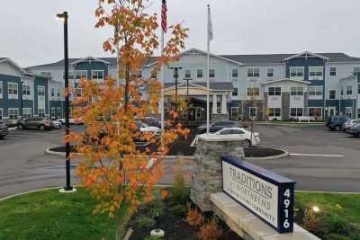To tackle black mold, first identify damp areas like bathrooms or basements. Use detergent or vinegar mixes to clean small infestations. Keep moisture levels low and fix leaks promptly. Ensure proper ventilation to prevent growth. Mold can cause allergies and respiratory issues. Seek professional help for severe cases. Protect vulnerable individuals from health risks. Swift action is key to battling mold effectively.
Key Takeaways
– Regularly inspect damp areas for mold growth.
– Use DIY methods for small infestations.
– Consider professional remediation for severe cases.
– Control moisture to prevent mold recurrence.
– Prioritize health by addressing mold promptly.
Understanding Black Mold
Understanding the dangers posed by black mold is crucial for effectively addressing and eliminating its presence in your home. Mold prevention is key to safeguarding your health and the structural integrity of your living space. Black mold, scientifically known as Stachybotrys chartarum, thrives in damp, humid environments. It releases spores that can cause various health risks when inhaled, especially for individuals with respiratory conditions or weakened immune systems.
To prevent black mold growth, you must control moisture levels in your home. Ensure proper ventilation in bathrooms and kitchens, promptly repair any leaks, and monitor humidity levels. Regularly inspect areas prone to dampness, such as basements, attics, and crawl spaces. By addressing water damage promptly and using dehumidifiers in moisture-prone areas, you can significantly reduce the risk of black mold infestation.
Prioritizing mold prevention not only protects your health but also preserves the value of your property. Stay vigilant, take proactive measures, and create a dry, well-ventilated environment to keep black mold at bay.
Identifying Mold Hotspots
When looking to identify mold hotspots in your home, pay close attention to common areas where mold tends to thrive, such as bathrooms, kitchens, and basements.
Keep an eye out for signs of mold growth like musty odors, water stains, or discoloration on walls and ceilings.
Common Mold Locations
Identifying mold hotspots is crucial in your battle against black mold infestation. Mold tends to thrive in hidden corners and damp environments, making it essential to inspect these areas regularly.
Common locations where black mold can be found include bathroom ceilings. The warm and moist conditions in bathrooms create the perfect breeding ground for mold spores to multiply rapidly. Pay special attention to any discoloration or musty odors in these areas, as they could indicate a mold infestation.
Signs of Mold
To detect potential mold hotspots, observe closely for any visible signs of mold growth or musty odors in specific areas of your home, such as bathroom ceilings. Mold can often be identified by its fuzzy, discolored patches on walls, ceilings, or floors.
Look out for any areas that appear damp or have water stains, as these can indicate hidden dangers of mold growth beneath the surface. Additionally, keep an eye on dark, moist areas like basements, crawl spaces, and under sinks, as they’re prime spots for mold to thrive.
Regularly inspecting these areas and practicing mold prevention measures, such as controlling humidity levels and fixing leaks promptly, can help in avoiding mold infestations in your home.
Effective Mold Removal Techniques
Effective mold removal techniques encompass a range of methods to thoroughly eliminate mold growth and prevent its recurrence. When tackling mold infestations, DIY removal can be effective for small affected areas. One common method is using a mixture of detergent and water to scrub the mold off surfaces. For harder-to-reach areas, a solution of vinegar and water can also be useful due to vinegar’s natural anti-fungal properties. In cases where the mold has penetrated porous materials like drywall or insulation, removal of these materials may be necessary to completely eradicate the mold.
Another effective technique is the use of commercial mold removal products. These products are specifically designed to target mold and mildew, providing a more potent solution for large infestations. However, always follow the manufacturer’s instructions and use protective gear when handling these chemicals.
In more severe cases, it may be best to seek professional help to ensure thorough mold removal. Professionals have access to specialized equipment and expertise to address extensive mold problems effectively. Remember, effective mold removal is crucial for maintaining a healthy living environment free from harmful mold spores.
Preventing Future Mold Growth
To prevent future mold growth in your home, it’s crucial to control moisture effectively. This can be achieved by promptly fixing any leaks, using exhaust fans in moisture-prone areas like bathrooms, and ensuring proper ventilation throughout your living space.
Regular inspections for any signs of water damage or mold growth are highly recommended to catch and address issues early on.
Moisture Control Tips
Implement these key moisture control tips to effectively prevent future mold growth in your living spaces.
Consider investing in a dehumidifier to regulate indoor humidity levels, as it can significantly reduce moisture in the air, creating an environment where mold struggles to thrive.
Additionally, explore waterproofing solutions for areas prone to dampness, such as basements or crawl spaces. Waterproof paints, sealants, and coatings can form a protective barrier against water intrusion, ultimately minimizing moisture buildup and mold development.
By integrating these strategies into your home maintenance routine, you proactively combat mold growth by addressing its root cause – excessive moisture.
Prioritizing these preventative measures will help you maintain a healthy living environment and protect your property from potential mold infestations.
Ventilation Strategies
To reduce the risk of mold growth in your home, prioritize proper ventilation to effectively control moisture levels and create an environment less conducive to mold infestation.
Mold prevention begins with implementing ventilation solutions such as using exhaust fans in bathrooms and kitchens to remove excess moisture. Make sure these fans are vented to the outside and not just into the attic to prevent moisture buildup.
Opening windows regularly to improve air circulation is another effective strategy. Consider installing a dehumidifier in areas prone to dampness to keep humidity levels below 60%.
Additionally, checking and maintaining your HVAC system to ensure proper airflow can aid in mold prevention. By incorporating these ventilation strategies, you can create an inhospitable environment for mold growth.
Regular Inspections Recommended
Regular inspections of your home are highly recommended to prevent future mold growth and ensure early detection of any potential issues. By conducting regular inspections, you can reap numerous benefits in the fight against mold infestations. You may want to hire a professional who handles mold testing in Hartford, CT (or wherever you are based), so they can do this properly to give you a definitive answer on if you have mold growing.
These inspections serve as proactive measures that can help you identify moisture-prone areas, leaky pipes, or water damage before they escalate into larger problems. The importance of prevention can’t be overstated when it comes to mold growth.
Early detection through inspections allows for prompt action, reducing the likelihood of extensive mold infestation and the associated health risks. Furthermore, scheduled inspections create a sense of security, knowing that you’re actively safeguarding your home against mold.
Health Risks Associated With Mold
Exposure to mold can pose serious health risks, especially for individuals with respiratory conditions or compromised immune systems. When mold spores are inhaled, they can trigger a range of health issues, including mold allergies and respiratory problems. Here are three key health risks associated with mold:
1. Mold Allergies:
Mold can cause allergic reactions in susceptible individuals, leading to symptoms like sneezing, runny nose, red eyes, and skin rashes. Those with mold allergies may experience heightened sensitivity upon exposure, making it crucial to address mold infestations promptly.
2. Respiratory Issues:
Prolonged exposure to mold can exacerbate respiratory conditions such as asthma and bronchitis. Mold spores can irritate the airways, leading to coughing, wheezing, chest tightness, and shortness of breath. Individuals with respiratory issues should take mold infestations seriously to prevent the worsening of their conditions.
3. Compromised Immune Systems:
People with weakened immune systems, such as the elderly, infants, or individuals undergoing chemotherapy, are at higher risk of developing severe health complications from mold exposure. Mold can further compromise their immune defenses, making them more susceptible to infections and illnesses. It’s essential for this vulnerable group to avoid mold exposure as much as possible.
Hiring Professional Mold Remediation
Considering the severity of black mold infestations, enlisting the services of professional mold remediation experts is crucial for effective and thorough removal. While there are DIY options available for mold removal, black mold is particularly hazardous and requires specialized handling. Professional mold remediation companies have the expertise, equipment, and protective gear necessary to safely and completely eliminate black mold from your property.
When assessing the cost considerations of hiring professionals for mold remediation, it’s essential to weigh the potential health risks and property damage that could result from inadequate removal. While professional services may initially seem more costly than DIY methods, the thoroughness and effectiveness of professional remediation can save you money in the long run by preventing recurring mold issues and safeguarding your health.
Conclusion
In conclusion, confronting black mold infestation requires a proactive approach to understanding, identifying, and effectively removing the mold from your home. By implementing proper prevention techniques and addressing mold hotspots promptly, you can reduce the risk of future mold growth and protect your health.
Remember, when dealing with a severe infestation, it may be necessary to hire professional mold remediation services to ensure thorough and safe removal. Stay vigilant and take action to keep your home mold-free.




